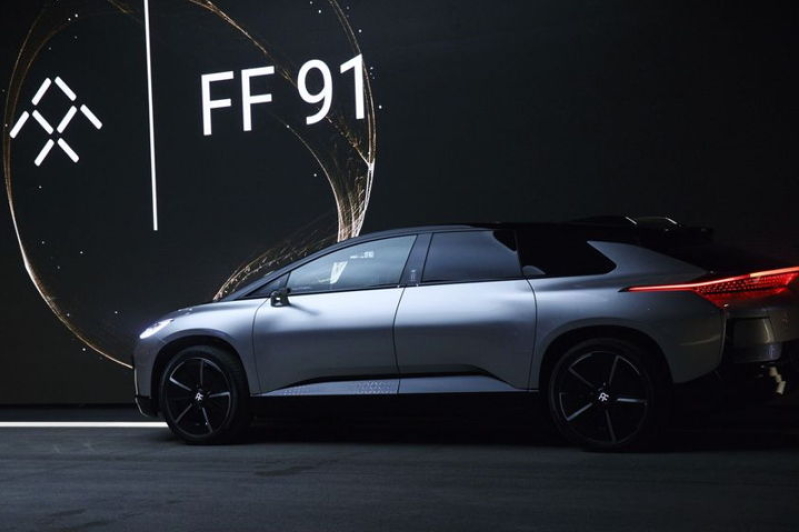
Faraday Future would like to burn rubber the eco-friendly way -- with the FF91 supercar that has been unveiled at CES 2017. Capable of going from zero to 60 miles per hour in a mind boggling 2.39 seconds, this will certainly beat the crap out of the 2.5 second time posted by Tesla’s Model S P100D when the ‘Ludicrous’ mode is set. Of course, most of the other gas-powered supercars can only look on in envy as well at the Faraday Future FF91.
Unfortunately, you will not be able to see this ride on our streets anytime soon this year, and at best, they should appear in music videos of rappers from 2018 onward. This is because the initial batch of deliveries for Faraday Future’s FF91 is set to kick off in 2018. There is no final sticker price attached to the FF91 as at press time for reasons best known to Faraday Future, and one of it would most probably be to keep the level of suspense high. However, those who are interested will have the chance to reserve a FF91 for themselves -- by dropping $5,000, of course.
While the FF91’s production model is already available, we suppose the folks over at Faraday Future will have some tweaking left to do, which is why the FF91 might take some more time before it actually hits the market. If you were to make your way to CES 2017, then do drop by Faraday Future’s booth, since there is a video there that showcases how the FF91 was able to trounce the Tesla Model S.
Faraday Future is backed by the billions of Jia Yueting of China, and hopes that the FF91’s production model debut will be able to deliver a level of support from investors. This particular ride is extremely impressive, right down to the smallest detail. It boasts of 1,050 horsepower underneath the hood, and on a full charge, the FF91 has the ability to travel more than 378 miles of adjusted EPA range. This would be “enough to travel from L.A. to Silicon Valley with miles to spare,” according to a certain Peter Savagian who is Faraday Future’s vice president of propulsion engineering. Not only that, the FF91 will also boast of a personalized interface for each individual passenger who steps inside, and has the smarts to look for an available parking space by itself. An electric smart valet, if I might say so myself. Good luck with the FF91 finding its own parking space in third world and developing countries though!
Jia, who happens to be the founder of LeEco, another major Chinese tech company, said, “We are not just building a vehicle but a globally shared internet mobility ecosystem. I’m willing to devote everything to my dream. Even my life.” Faraday Future’s plant that is located in Nevada will kick start its production in 2017, and its suppliers will definitely be paid, as mentioned by Nick Sampson, who is the FF91’s research and development chief.
While the FF91 is certainly impressive, the big question is, after all the research and development that is thrown into the mix, how are they going to end up being profitable? After all, that is the reason why someone would like to go into business in the first place -- to make money. Perhaps this is considered as an "investment" that would place Faraday Future's brand into mainstream consciousness before they move on to other projects that regular Joes and Janes on the street can identify with.







